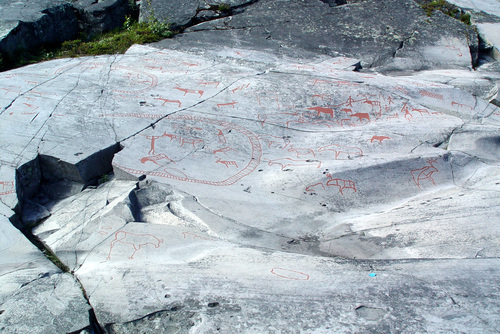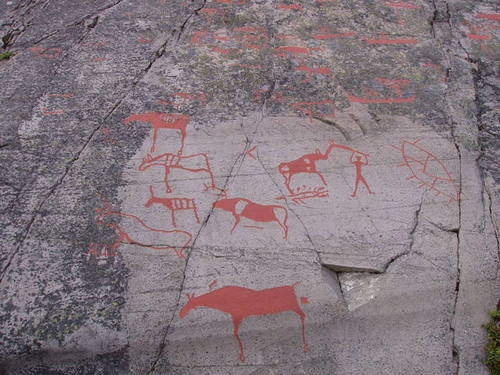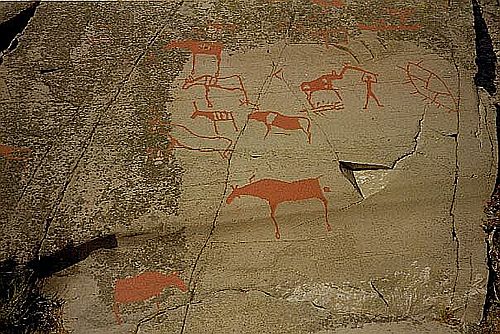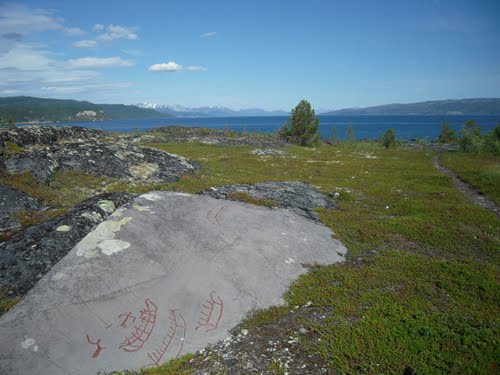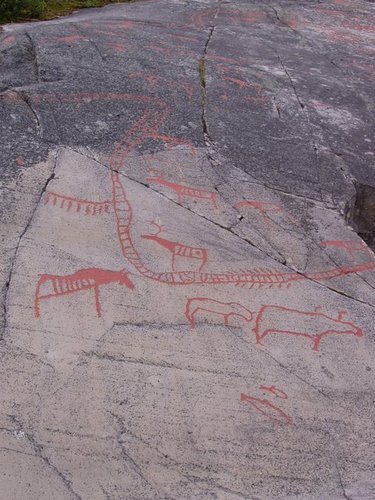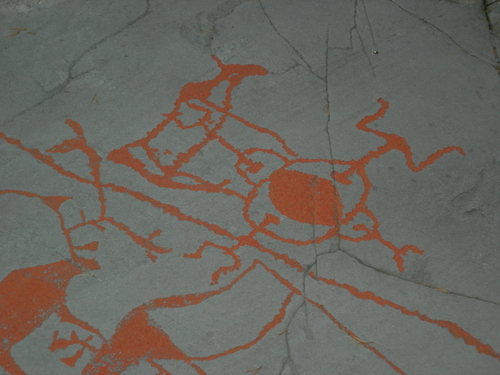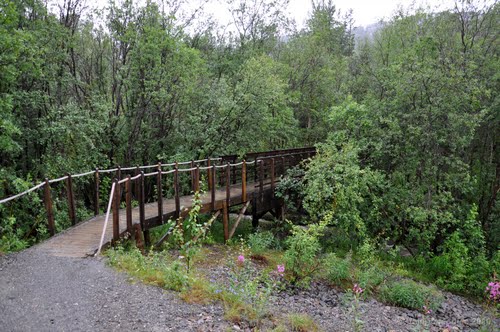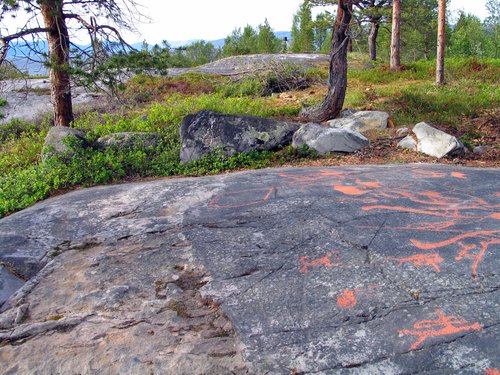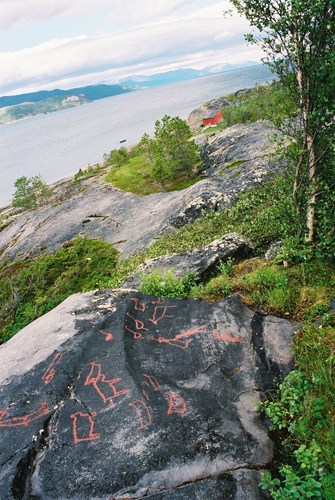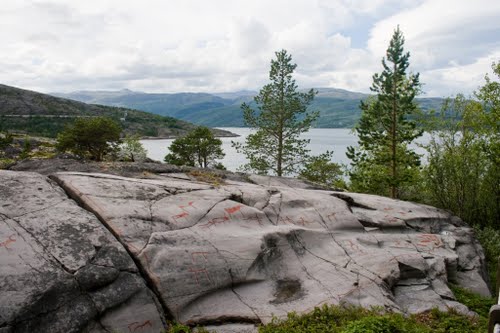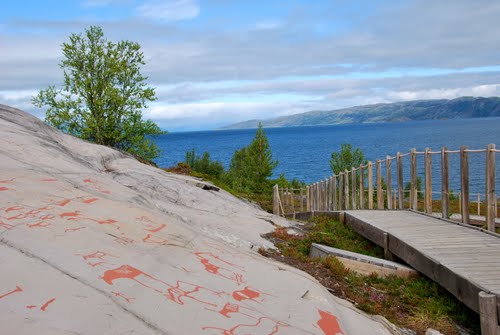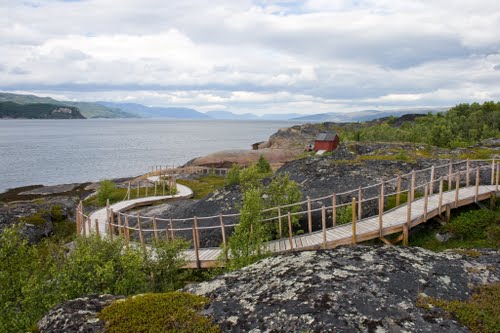The Rock art of Alta are located in and around the municipality of Alta in the county of Finnmark in northern Norway. Since the first carvings were discovered in 1973, more than 6000 carvings have been found on several sites around Alta. The largest locality, at Jiepmaluokta about 5 kilometres from Alta, contains thousands of individual carvings and has been turned into an open-air museum. The site, along with the sites Storsteinen, Kafjord, Amtmannsnes and Transfarelv, was placed on the UNESCO list of World Heritage Sites on 3 December 1985. It is Norway's only prehistoric World Heritage Site.
The carvings were divided into five separate groups by Professor Knut Helskog, of the Department of Cultural Sciences at the University of Tromso. Using shoreline dating, the earliest carvings were dated to around 4200 BC, the most recent carvings were dated to around 500 BC. In 2010 researcher Jan Magne Gjerde pushed the dates for the oldest phases back by 1000 years. The wide variety of imagery shows a culture of hunter-gatherers that was able to control herds of reindeer, was adept at boat building and fishing and practiced shamanistic rituals involving bear worship and other venerated animals.
Cultural and historical background
At the time the carvings were created, Norway was inhabited by hunter-gatherers. The period of almost 5000 years over which carvings were made, the people of the late stoneage and early metal age, saw many cultural changes, including the adoption of metal tools and changes in areas such as boat building and fishing techniques. The carvings show a wide variety of imagery and religious symbolism. There are however some main motifs that are found throughout all the different periods, like the reindeer. Rock carvings especially from the earliest period show great similarity with carvings from northwestern Russia, indicating contact between and maybe parallel development of cultures over a wide area of Europe's extreme North.
Alta's rock carvings were probably created using quartzite chisels that were probably driven by hammers made from some harder rocks; probable examples of chisels have been found throughout the area and are on display in Alta Museum. The technique of using rock chisels seems to have been continued even after metal tools came into use in the area.
Due to the effects of post-glacial rebound, the whole of Scandinavia started to rise at a considerable rate out of the ocean after the end of the last ice age. While this effect is still somewhat noticeable today, it is thought to have been much more rapid and probably even noticeable during the lifetime of individual humans during the time Alta's rock drawings were created. There are overwhelming indications that the carvings were originally located directly on the shoreline and were gradually lifted to their present-day positions several dozen metres inland.
Discovery and restoration
The first carvings were discovered in autumn 1973 in the area of Jiepmaluokta, about 4 kilometres from the town centre of Alta. During the 1970s, many more carvings were discovered all around Alta, with a noticeably higher density around Jiepmaluokta (of around 6000 known carvings in the area, more than 3000 are located there). A system of wooden walkways totaling about 3 kilometres was constructed in the Jiepmaluokta area during the second half of the 1980s, and Alta's museum was moved from its previous location in the town centre to the site of the rock carvings in 1991. Although several other sites around Alta are known and new carvings are constantly discovered, only the Hjemmeluft locality is part of the official tour of the museum.
Most rocks around Alta are overgrown with a thick growth of moss and lichen, once carvings have been discovered, these plants are carefully removed and the rock is cleaned to expose the full extent of the carvings. The carvings are then documented using different techniques, most often the combination of quartz powder painted into the carvings which are then photographed and digitally treated.

